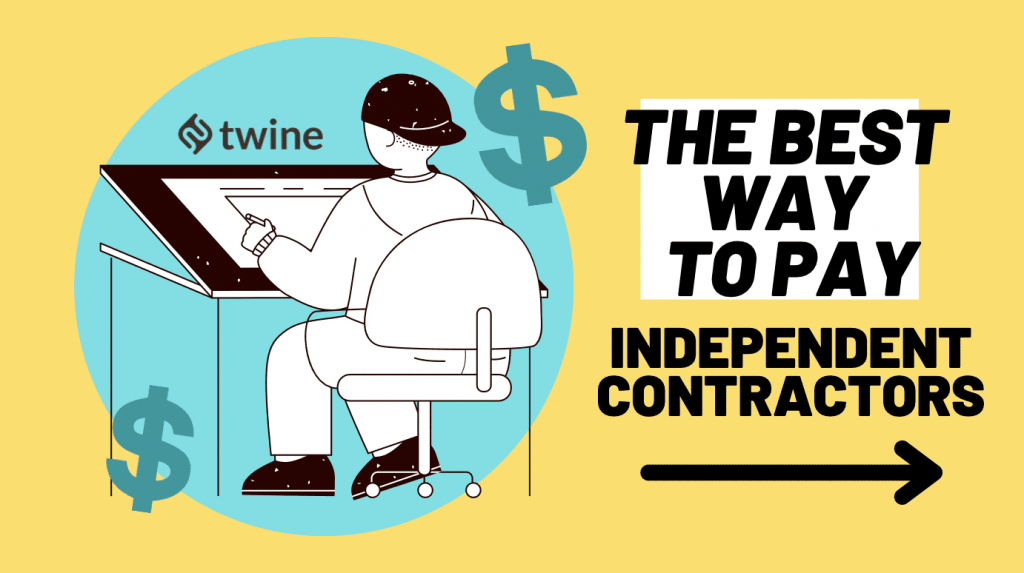
When you hire a freelancer, you should know already how you’re going to pay them. But, what is the best way to pay independent contractors? Hiring independent contractors is one thing, but paying independent contractors is a whole other ball game…
Both you (the client) and your freelancer will want to know that the other person will hold up their end of the deal – nobody wants to be ripped off. Your freelancer probably wants to be paid before the project, so they know you won’t walk away with their hard work. On the other hand, you want to wait until after it’s complete, so your freelancer doesn’t do a runner… right? What’s the solution?
Luckily for you, we’ve done our fair share of trial and error, and know the best way to pay independent contractors – so you don’t have to make any future mistakes!
The Best Way To Pay Independent Contractors – Our #7 Step Guide
1. Agree on payment terms in a contract

The contract is there to protect both you and your freelancer. That way, nobody can slip under the radar undetected without facing serious consequences. Make sure you take time to construct a contract that is concise, yet at the same time goes into detail for all the relevant bits. When in doubt, write it out – don’t leave anything to chance, your future you will thank you.
So, when it comes to paying, make sure you’ve talked about when you’ll pay your hired contractor before they start the work. You want a clear freelancer-client agreement that doesn’t leave any room for ambiguity and outlines when payments will be due.
2. Pay a deposit upfront

Deposits are great security for both parties. The freelancer knows you can put your money where your mouth is, and you know they’re committed to doing the work.
This might become less necessary if you’ve worked with someone before and know them well, but if it’s a new business arrangement – or a long-term project – we’d definitely recommend paying something upfront. This might be 25% or 50% of the project rate, but do your research, don’t just take our word for it!
You can’t blame a freelancer for wanting this either – getting 50% is better than nothing if they finish the work and then you back out. When the project’s complete, you’ll then pay off the remaining sum.
3. Pay in installments…

It can feel painful reaching the end of a project and realizing that big sum that seemed so abstract six months ago is now due.
Even if you think it’s a great idea to wait until the end of a massive project to pay your freelancer, can you be sure you’ll think that when it comes to coughing up? In these cases, definitely consider splitting the cost into more manageable installments.
The other advantage of this is that regular payments will remind you to check in on your project. This means you have the chance to give feedback and make sure everything is going to plan.
…or, pay it all at once
We wouldn’t recommend this one for the reasons stated above.
For really big projects, an immediate sum isn’t advisable, but for small, short-term work, it could be more straight-forward? You decide whether you bite the bullet and pay it all upfront, or wait til after the work is complete.
If you go down this route, it’s very important to have a watertight contract, and maybe even a middleman to make sure both parties do what they’re supposed to!
4. Handle alterations (the correct way)

Many clients figuring out how to pay contractors will wait til the final hurdle – without asking for alterations! Wrong call.
Once a project is finished, there’s a strong chance you’ll want to make a few changes. Again, the terms of these revisions need to be defined in a contract. Do you pay before or after the final changes are made? Some freelancers will only grant you a limited number of revisions, and any more you’ll have to pay a set charge.
5. Need ongoing work?

If you find yourself hiring the same freelancer again and again – for example, to maintain a website or write blog posts – it might be worth hiring them on retainer.
Hiring on retainer means you’ll pay them an agreed amount each month, and in return, they’ll do set tasks. This might mean certain monthly tasks (like blog posts) or simply so that they’re on hand for emergencies.
Other services might include faster work or consult for your business. This is a great arrangement that benefits both you and the freelancer, as you’re giving them extra security on their contractor payments. Again, make sure the exact terms are agreed upon upfront and don’t expect services you haven’t agreed on. And, get your monthly payment in on time!
And lastly… PAY!
No excuses – if they’ve done the work, pay them well and pay them on time. Twine has a no-nonsense policy when it comes to paying contractors: if you want to avoid any legal trouble, abide by your contract and stick to it!
Ready to hire? Our marketplace of over 410,000 freelancers have the skills and expertise needed to skyrocket your business to the next level. From marketers to designers, copywriters to SEO experts – browse the talented bunch here!



